Wood rot / fixing lawn chairs
This article also available in Spanish.It's hard to predict where wood will rot, so it can be useful to examine stuff that has rotted to some degree to get a better sense of it.
What prompted this adventure was that we set up all the lawn chairs at Amogla camp for my brother's wedding. With all the chairs lined up, it was a good opportunity to examine them all and see which could use repairs.
My dad built the first batch of these some time around 1984, with more batches over the following years. So some of these chairs have been outside for nearly 30 summers now and a few of the seat and armrest boards have rotted. Considering the time, I was surprised they weren't any worse.
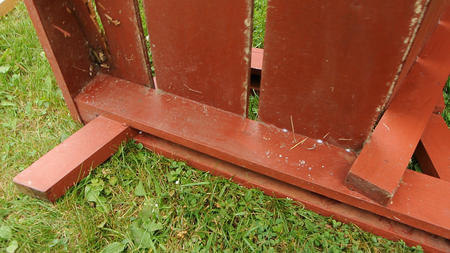 The frames of all the chairs were made from white cedar (Thuja, to be correct). This wood
is very rot resistant, and overall, I could see almost no rot in the frames.
The frames of all the chairs were made from white cedar (Thuja, to be correct). This wood
is very rot resistant, and overall, I could see almost no rot in the frames.
Rot often happens where wood pieces are joined together, because that's where moisture can get trapped. But the Weldbond glue my dad used seems to have held tight and kept the rot out. I was pleasantly surprised by that.
Even the ends of the legs, which are always on the ground, were not rotten. But I think we also soaked the ends of all the legs in wood preserver, which probably helped. (or at least I always did on the ones I sold).
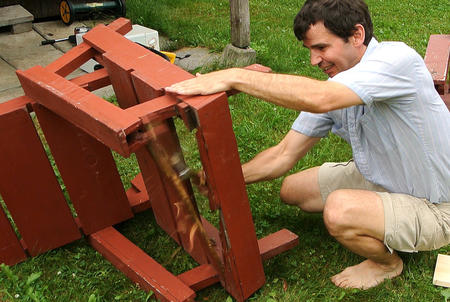
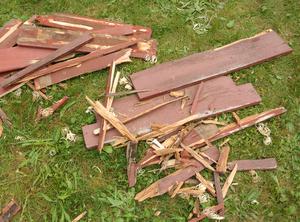 The rotted boards mostly came off in splinters, though the still good boards
were still solid. I'm guessing that the boards that rotted were mostly
from sapwood and the others weren't. I was surprised at how localized the rot was.
The rotted boards mostly came off in splinters, though the still good boards
were still solid. I'm guessing that the boards that rotted were mostly
from sapwood and the others weren't. I was surprised at how localized the rot was.
Marking where to cut the notch for a new board.
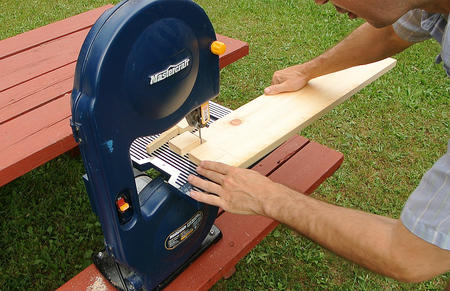 This cheap little bandsaw was handy for
cutting out the notches, though a jigsaw would have worked too.
This cheap little bandsaw was handy for
cutting out the notches, though a jigsaw would have worked too.
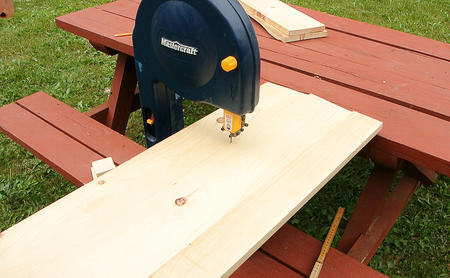 I had to make a few rip cuts with it too. I first tried it using the
saw's rip fence, but the blade on it wants to cut at a slight angle, so the fence
wasn't much use. I marked a line on the wood and then cut it freehand.
I had to make a few rip cuts with it too. I first tried it using the
saw's rip fence, but the blade on it wants to cut at a slight angle, so the fence
wasn't much use. I marked a line on the wood and then cut it freehand.
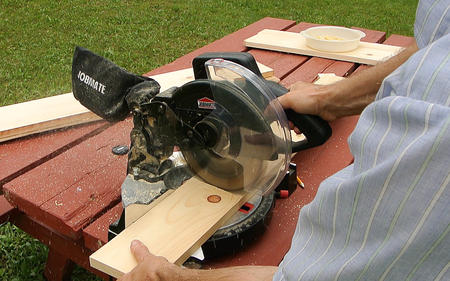 For the crosscuts, I used a chop saw that I found in the garbage. The saw isn't good enough
to use in my shop, but handy for stuff like this. I also used it
framing my shed and fixing a deck
For the crosscuts, I used a chop saw that I found in the garbage. The saw isn't good enough
to use in my shop, but handy for stuff like this. I also used it
framing my shed and fixing a deck
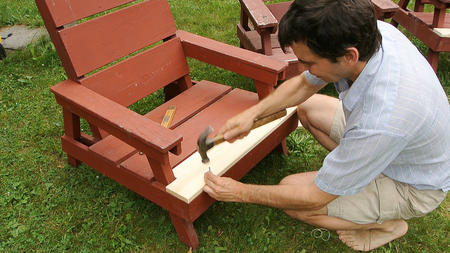 I nailed the new boards on with the same nails that I pulled out from the old boards.
This saved me the trouble of finding matching ones.
I nailed the new boards on with the same nails that I pulled out from the old boards.
This saved me the trouble of finding matching ones.
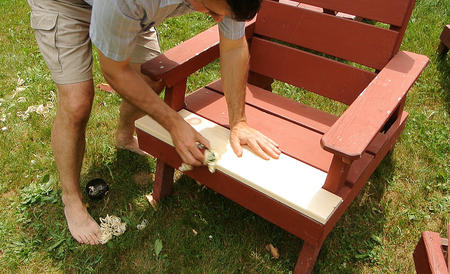 My dad used a roundover profile on some of the chairs.
I didn't bring a router, so I reproduced the roundovers with a few strokes
of a small palm plane.
My dad used a roundover profile on some of the chairs.
I didn't bring a router, so I reproduced the roundovers with a few strokes
of a small palm plane.
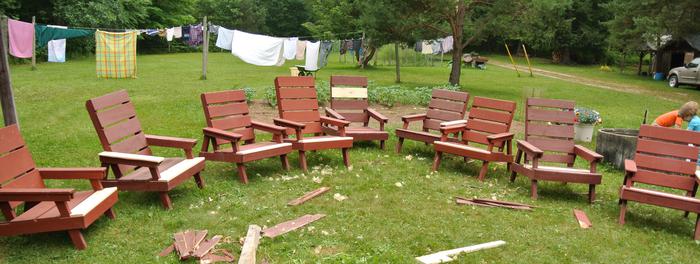 Chairs all fixed. Of the 30 odd chairs, nine needed a total of 11 boards replaced.
Not bad for decades of use! Though I should add that these chairs have only been outside
for three months each summer.
Chairs all fixed. Of the 30 odd chairs, nine needed a total of 11 boards replaced.
Not bad for decades of use! Though I should add that these chairs have only been outside
for three months each summer.
I think the key to avoiding wood rot is a relatively open structure that dries out easily, and where the wood does join, a tight glued joint that keeps the moisture out.
I also think it's important to avoid paint or sealers. Water will always find it's way in somewhere, and paint will trap the moisture inside.
See also:
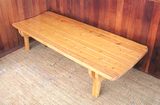 Patio bench
Patio bench(for napping)
Back to my Woodworking website.
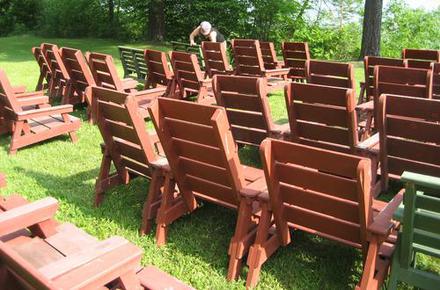
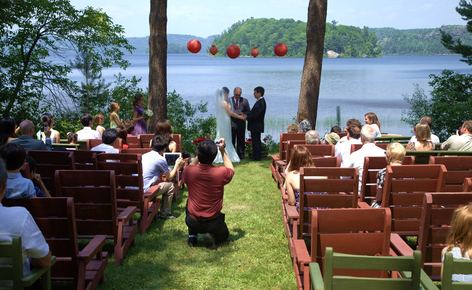
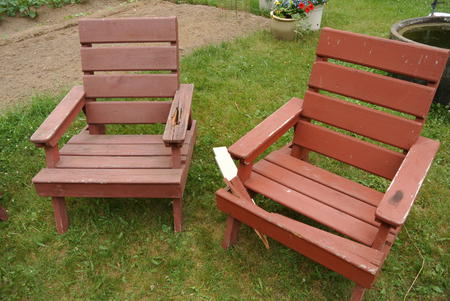
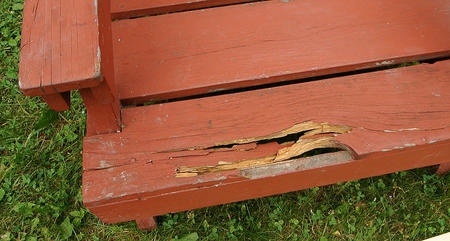
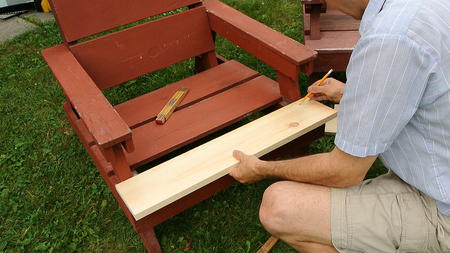
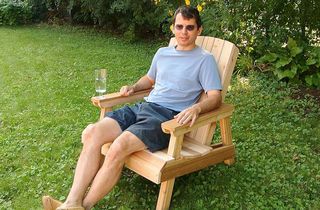 Building lawn chairs
Building lawn chairs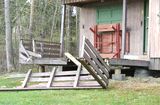 Deck repair hack job
Deck repair hack job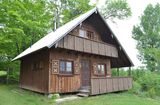 Touring cottage #2
Touring cottage #2 Fixing kitchen chairs
Fixing kitchen chairs Fixing squirrel damaged cabinet doors
Fixing squirrel damaged cabinet doors A look at weathered wood
A look at weathered wood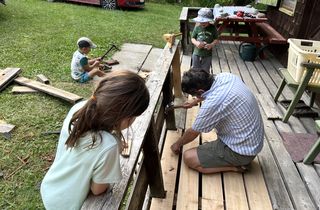 Amogla camp: Half-assed repairs jobs on purpose
Amogla camp: Half-assed repairs jobs on purpose